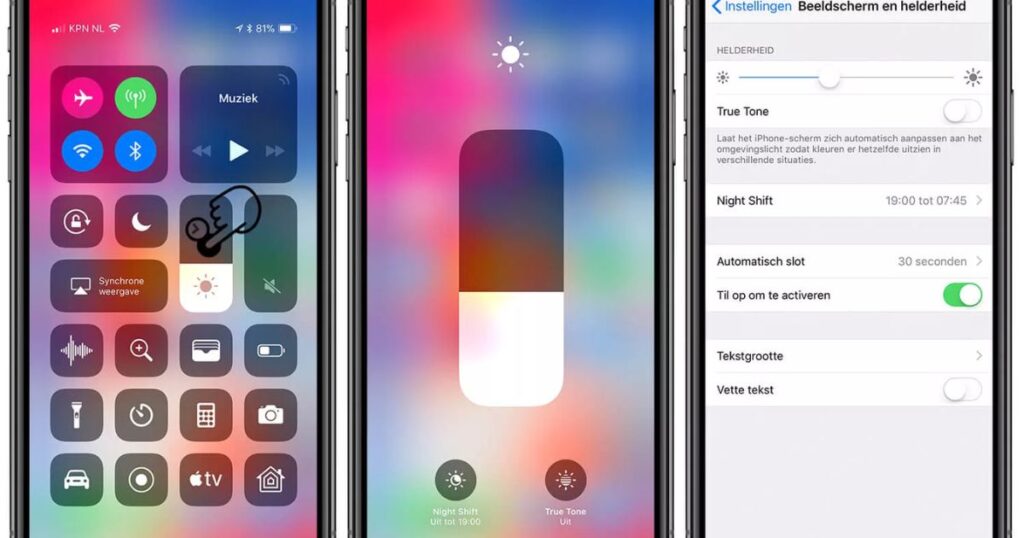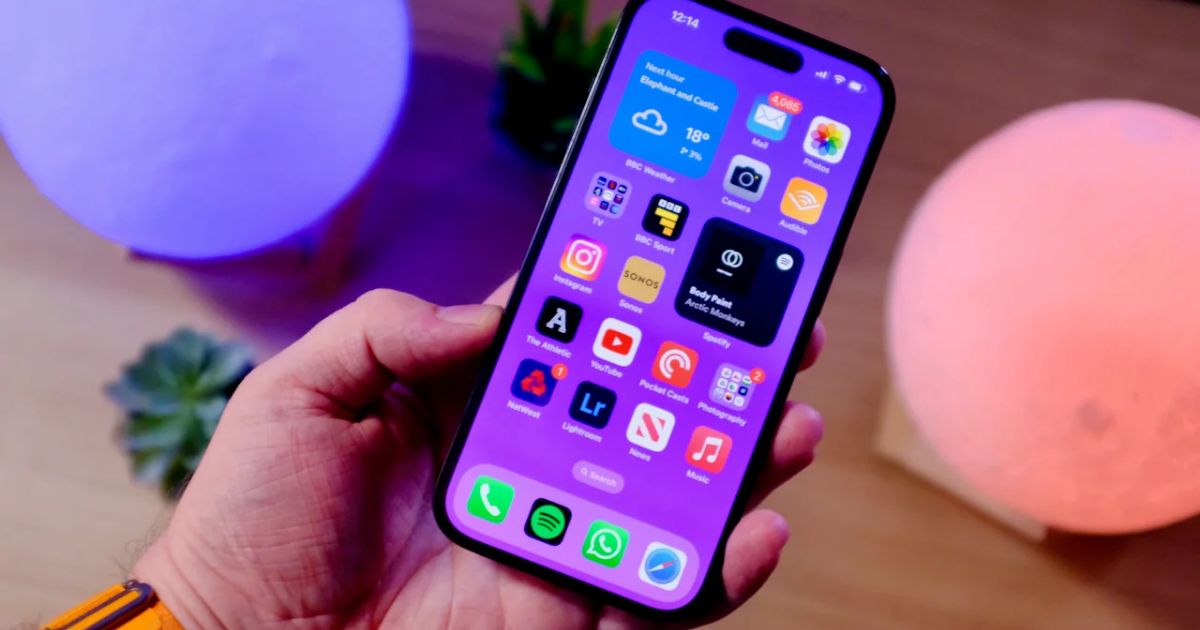True Tone is a display feature on iPhones that adjusts screen colors based on ambient light. It uses sensors to measure surrounding light and adapts the display accordingly. This technology aims to provide a more natural viewing experience in various lighting conditions.
Ever felt like your iPhone’s screen just doesn’t look right in certain lights? You’re not alone. Many users struggle with eye strain and visual discomfort when using their devices. True Tone might be the solution you’ve been looking for.
Apple introduced True Tone in 2016 with the iPad Pro. Since then, it’s become a standard feature on newer iPhones. True Tone works by changing the white balance of the display to match your environment. This subtle adjustment can make a big difference in how you see and interact with your device.
What is Apple True Tone?
True Tone is Apple’s innovative display technology that adapts to your surroundings. It’s like having a personal screen calibrator in your pocket, constantly tweaking your display to match the light around you. Introduced with the iPad Pro in 2016, this feature quickly made its way to iPhones, revolutionizing visual comfort for millions of users.
The science behind True Tone is fascinating. It’s all about color temperature, measured in Kelvins. Our eyes perceive colors differently based on the lighting conditions.
True Tone uses advanced sensors to detect the ambient light and adjusts the screen’s white balance accordingly. This means whether you’re basking in the warm glow of a sunset or under harsh fluorescent office lights, your iPhone’s display will adapt to provide the most natural looking images.
What Does True Tone Do on iPhone: How Does it Work?

True Tone is like a chameleon for your iPhone’s screen. It uses a clever combination of ambient light sensors and software algorithms to work its magic. Here’s the lowdown on how it operates:
- The iPhone’s sensors constantly measure the color and intensity of the surrounding light.
- This data is processed by the device’s software in real time.
- The display’s color temperature is adjusted to match the ambient lighting conditions.
- The result? A screen that looks natural and comfortable in any environment.
This adaptive display technology ensures that whites appear consistently white, regardless of the lighting conditions. It’s not just about comfort; it’s about color accuracy too. For photographers, designers, or anyone who cares about true to life colors, True Tone is a game changer.
How to Enable True Tone iPhone, iPad, macOS Ventura, or Later
On iPhone and iPad:
Enabling True Tone is a breeze. Here’s how:
- Go to Settings > Display & Brightness
- Look for the True Tone toggle and switch it on
Alternatively, you can use the Control Center for quick access. Just swipe down from the top right corner of your screen (or up from the bottom on older models), press and hold the brightness slider, and tap the True Tone button.
On macOS Ventura or Later:
For Mac users, the process is equally simple:
- Click the Apple menu > System Settings
- Choose Displays
- Look for True Tone and toggle it on
Pro tip: You can ask Siri to turn True Tone on or off. Just say, Hey Siri, turn on True Tone and watch the magic happen.
Read More : Applemiller9to5mac: Unveiling the Latest Apple News and Insights
How to enable True Tone on your iPhone through Control Center
1. To open the Control Center, swipe up from the bottom of your iPhone’s screen (or swipe down from the top right corner on an iPhone X or newer). You can do this whether your iPhone is locked or unlocked.
2. Look for the Brightness slider (next to the volume slider) and press the sun icon.
3. In the bottom right corner, you’ll see True Tone. Tap it to turn True Tone on or off.
True Tone is a feature like Apple’s Night Shift that changes the colors and brightness on your screen during the evening and early morning.
Difference Between True Tone and Night Shift
While both True Tone and Night Shift affect your display, they serve different purposes. Here’s a quick comparison:
| Feature | True Tone | Night Shift |
| Purpose | Adapts color temperature to ambient light | Reduces blue light in the evening |
| When it works | All day | Scheduled or manual activation |
| Effect on colors | Maintains natural appearance | Shifts to warmer tones |
| Primary benefit | Improved visual comfort and accuracy | Better sleep hygiene |
True Tone is your all day companion, constantly adjusting to your environment. Night Shift, on the other hand, is your evening buddy, helping you wind down by reducing blue light exposure. They can work together to provide optimal viewing comfort around the clock.
The Benefits of True Tone Display

True Tone isn’t just a fancy feature; it’s a real eye saver. Here’s why it’s worth your attention:
- Reduced eye strain: By matching your screen to the ambient light, True Tone makes extended viewing sessions much more comfortable.
- Improved color accuracy: For creatives and professionals, True Tone ensures colors look consistent across different lighting conditions.
- Enhanced reading experience: Text appears more natural and easier to read, especially in low light situations.
- Better battery management: True Tone’s adjustments can help optimize your display’s power consumption.
- Professional grade tool: Photographers and designers can rely on True Tone for more accurate color representation in various environments.
A study by the Vision Council found that 59% of American adults report symptoms of digital eye strain. True Tone technology is a step towards mitigating this widespread issue.
Conclusion
After diving deep into True Tone, the verdict is clear it’s a resounding yes. This display feature is more than just a gimmick; it’s a valuable tool for enhancing your visual experience and protecting your eyes. Whether you’re a casual user who enjoys browsing social media, a professional who needs color accuracy, or someone who’s glued to their phone all day, True Tone has something to offer.
It’s one of those features that once you start using, you’ll wonder how you ever lived without it. As display technology continues to evolve, we can expect even more innovations in screen optimization and visual comfort. But for now, True Tone stands as a shining example of how small adjustments can make a big difference in our daily digital interactions.
FAQs
Is True Tone good for iPhone?
True Tone adjusts display color based on ambient light, making viewing more comfortable. It’s generally considered a positive feature for iPhones.
Is True Tone good for eyes?
True Tone can reduce eye strain by matching screen warmth to surroundings. This may be beneficial for eye comfort, especially in low-light conditions.
Does True Tone drain an iPhone battery?
True Tone has a minimal impact on battery life. The slight power draw is generally outweighed by the improved viewing experience.
Does True Tone affect camera quality?
True Tone doesn’t directly affect camera quality or captured images. It only adjusts the display, not the camera’s performance or output.

With three years of experience in website development, I share the latest in technology on my blog, [TechTimy]. Join me for insights, trends, and updates in the tech world.



